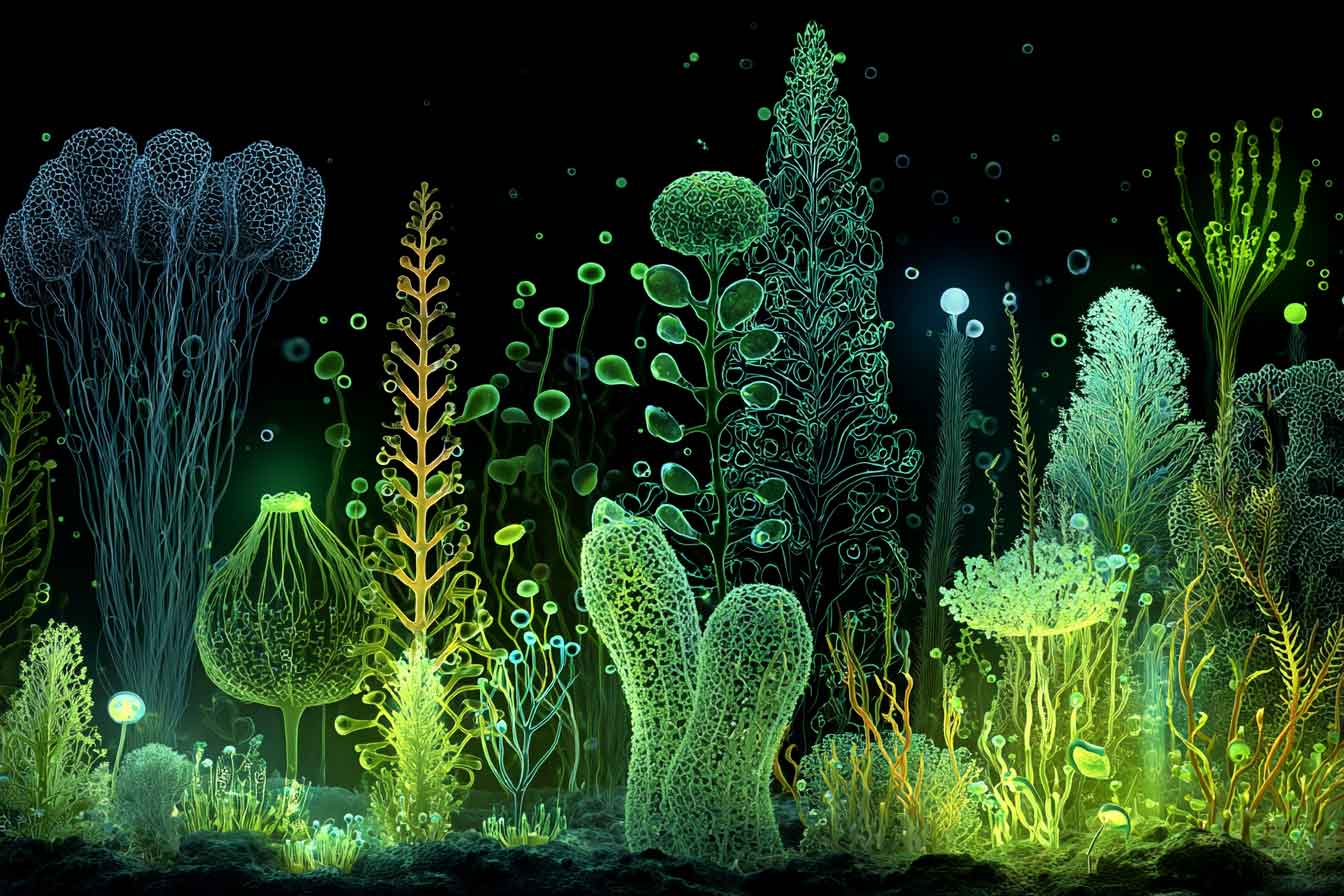
Life on Earth began in its simplest form — single-celled organisms. These tiny, self-sufficient entities floated in ancient oceans over 3.5 billion years ago. Yet, from these microscopic beginnings emerged the incredible diversity of complex, multicellular organisms we see today — from plants and fungi to animals and humans.
But how did this monumental leap occur? How did independent single cells decide to cooperate, specialize, and form bodies with billions — or even trillions — of interconnected cells?
Let’s explore the fascinating journey of how single-celled life evolved into multicellular organisms, the evolutionary steps involved, and examples that still exist today as living clues to our shared origins.
The earliest life forms were prokaryotes, such as bacteria and archaea — simple cells without nuclei. These organisms lived independently, reproducing by division and surviving in harsh conditions.
Over time, more complex single cells known as eukaryotes appeared (around 2 billion years ago). These cells contained nuclei and organelles, allowing more efficient internal organization and energy use. This leap in complexity paved the way for multicellularity.
A key theory behind this transition is endosymbiosis — the idea that certain organelles (like mitochondria and chloroplasts) were once free-living bacteria that entered larger cells and became permanent residents. This partnership gave rise to stronger, energy-efficient eukaryotic cells.
The first step toward multicellularity was aggregation — when individual cells grouped together for protection or efficiency.
Some modern organisms still display this stage of evolution. For example:
These colonies weren’t yet true multicellular organisms because all cells were still capable of living independently. However, they set the stage for the next step: division of labor.
At some point, groups of identical cells began to specialize — some for movement, some for reproduction, others for feeding or structural support.
This specialization meant that not every cell could survive alone anymore, but together, the group became more efficient. This trade-off — individual independence for collective success — marked the true dawn of multicellular life.
For instance:
This functional specialization was a turning point in evolution.
To coordinate their functions, cells developed communication systems.
They evolved ways to send chemical signals, respond to environmental cues, and synchronize actions — much like how organs in our body work together today.
Signaling molecules such as hormones and proteins allowed cells to:
This intercellular communication created the foundation for organized bodies with structured growth — tissues, organs, and systems.
Multicellularity required not only communication but also genetic regulation.
Cells had to know when to divide, differentiate, or self-destruct — ensuring that the organism as a whole could develop properly.
Genes that controlled cell adhesion, differentiation, and apoptosis (programmed cell death) became crucial for maintaining harmony among billions of cells.
A major evolutionary innovation was the regulatory gene networks — master switches that could turn entire sets of genes on or off during development.
These networks allowed for complex body plans, such as those seen in early multicellular animals like hydras and jellyfish.
Today, we can still observe many examples that reflect different stages in this evolutionary journey:
| Stage | Example | Description |
|---|---|---|
| Single-celled | Amoeba, Paramecium, Bacteria | Live and function entirely as one cell. |
| Colony-forming | Volvox, Chlamydomonas, Slime molds | Groups of cells cooperate loosely; not fully dependent. |
| Simple multicellular | Sponges, Algae (Ulva) | Have different cell types but lack complex organs. |
| Complex multicellular | Fungi, Plants, Animals | Have tissues, organs, and systems; cells are interdependent. |
These organisms act like living fossils, representing different points along the evolutionary path.
The rise of multicellularity offered several evolutionary advantages:
Over millions of years, multicellular organisms diversified into every possible environment — from deep oceans to deserts, from microscopic plankton to towering trees and intelligent beings.
Every living creature — including humans — is a descendant of those ancient, single-celled pioneers.
Our own bodies begin life as a single cell — the fertilized egg — that divides, differentiates, and forms tissues and organs. In a way, each human recapitulates billions of years of evolution during their development.
From one to many, life’s story is a saga of unity, cooperation, and adaptation — a masterpiece sculpted by evolution itself.
The transition from single-celled to multicellular life wasn’t a single event but a gradual, step-by-step transformation over billions of years.
Through cooperation, specialization, communication, and genetic innovation, simple cells became part of something far greater — a living system capable of thought, growth, and emotion.
From bacteria to blue whales, the history of multicellularity is the story of life’s greatest teamwork.